16 Most Common Types of Butterflies in Michigan (With Pictures)
-
Cheryl Regan
- Last updated:
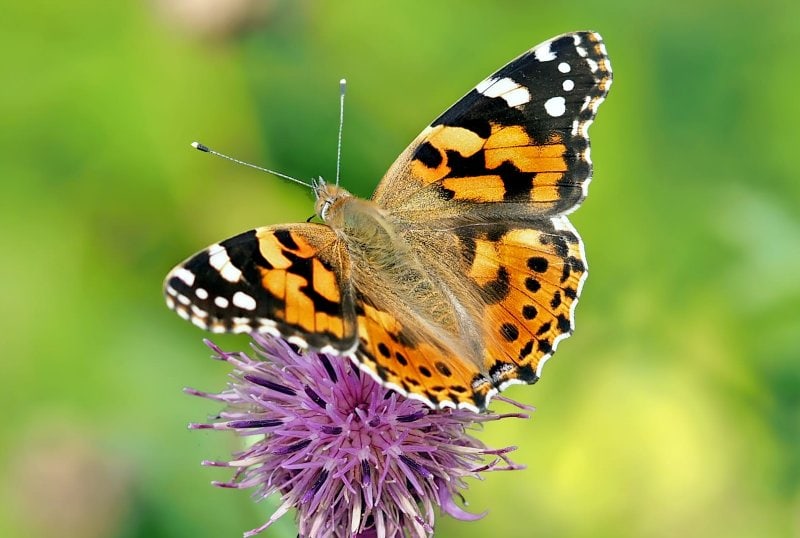
Would it come as a surprise if we told you that Michigan has dozens of beautiful butterflies that spend time here? Sure, you might not see them fluttering around in the dead of winter, but as soon as Mother Nature decides it’s time to start warming up for the year, there will be a lot more of these flying insects making an appearance. Let’s look at some of the most common butterflies to spot in Michigan.

The 16 Most Common Types of Butterflies in Michigan
1. Red Admiral Butterfly

| Scientific Name: | Vanessa atalanta |
If you live in Michigan, there’s no question that you’ve spotted the Red Admiral at one point in your life. These butterflies have a wingspan of 1.75–2.5 inches. The caterpillars are charcoal of pinkish-gray in color and have white spots with long spines that look like hairs. As adults, they are dark brown and have reddish bands with white spots on their wings. This coloration helps them camouflage themselves with bark.
2. Painted Lady Butterfly
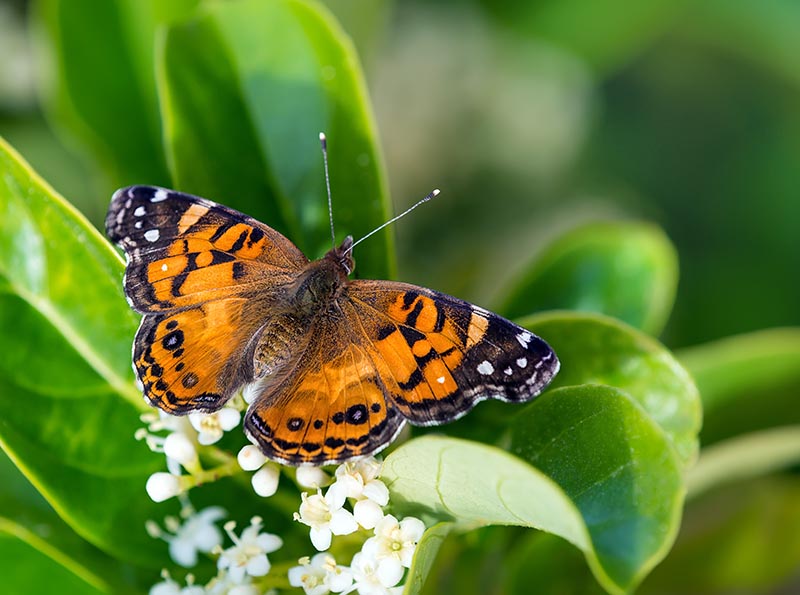
| Scientific Name: | Vanessa cardui |
Not to be confused with the Monarch thanks to its black and orange colors, the Painted Lady is another beautiful caterpillar found in Michigan. Painted Ladies have wingspans stretching up to 2.5 inches. Caterpillars have interesting looks with colors that range from greenish-yellow to gray. This is also the only butterfly that mates year-round because of its constant migration pattern.
3. Monarch Butterfly
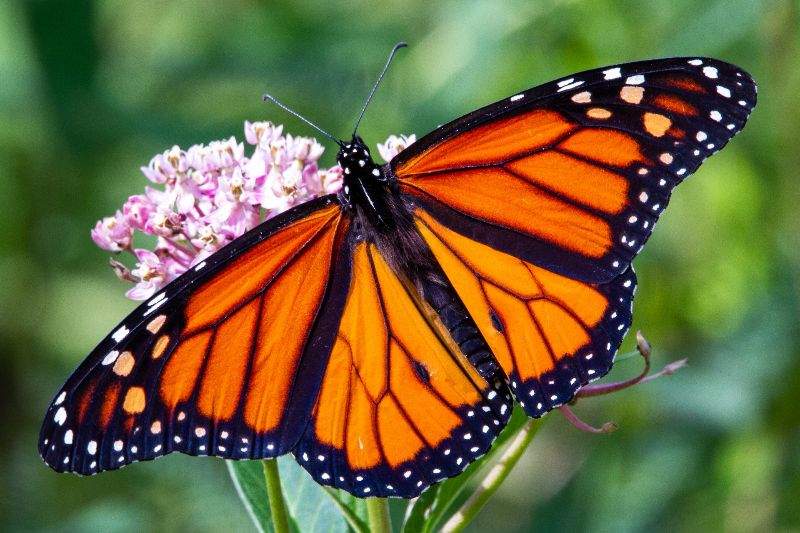
| Scientific Name: | Danaus plexippus |
Probably one of the most easily recognized butterflies in the world, the Monarch is another popular butterfly in the state. These large insects have wingspans up to 4 inches wide and are famous for their “stained glass” orange and black wings. Caterpillars, however, are banded with black, white, and yellow. As you probably already know, look for Monarchs wherever there’s milkweed.
4. American Lady Butterfly

| Scientific Name: | Vanessa virginiensis |
You’re most likely to spot the American Lady near open landscapes where there are plenty of leafy flowering plants. They have a wingspan stretching 1.75–2.5 inches. Adults are bright orange with dark borders and a few purple spots. The underside of the wings also have eyespots to ward off predators and other potential danger.
5. Viceroy Butterfly
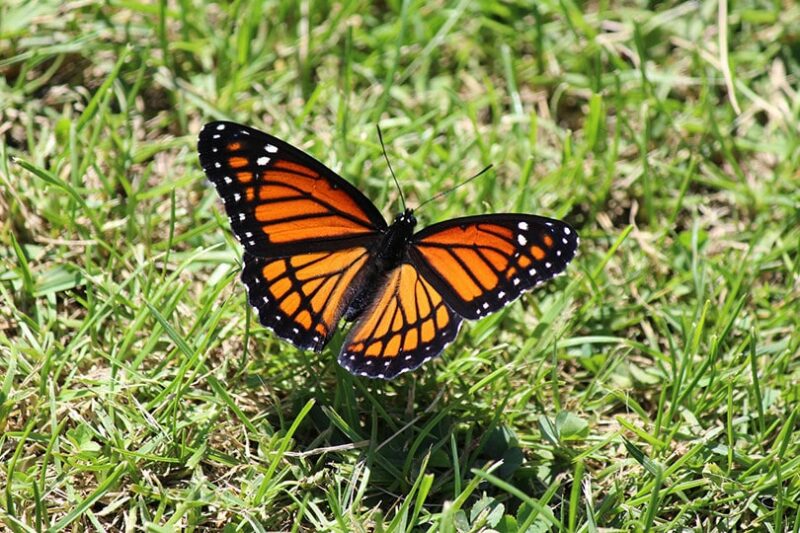
| Scientific Name: | Limenitis archippus |
The Viceroy is on the larger side with a wingspan of 2.5–3.25 inches. They are deep orange in color with black edges and veins and white spots. Because of this, they are another butterfly mistaken for the Monarch. Thankfully, the caterpillars look very different from one another, with the Viceroy caterpillar being greenish brown with lots of spines.
6. Hackberry Emperor Butterfly
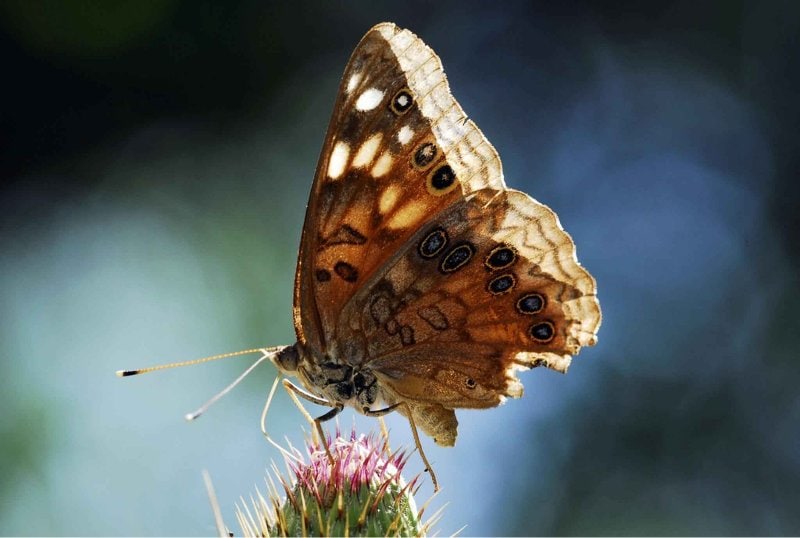
| Scientific Name: | Asterocampa celtis |
The Hackberry Emperor is known for its intricate brown and black wing pattern with orange eyespots. The caterpillars, on the other hand, are light green with two yellow stripes. Look for these butterflies in moist, wooded areas and suburban yards. Interestingly enough, one place you won’t find them is on flowers since they don’t actually eat any nectar.
7. Red-Spotted Purple Butterfly
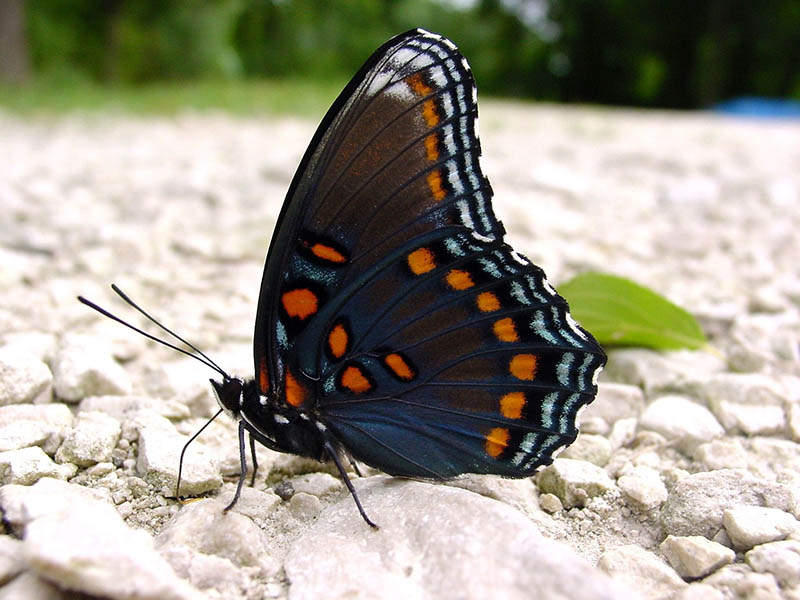
| Scientific Name: | Limenitis arthemis astyanax |
The Red-Spotted Purple is a large butterfly with a wingspan of up to 4 inches. Their beautiful iridescent coloring is what makes them stand out compared to other butterflies in the area. They are covered with shades of blue and touches of bright orange. If you want to attract them to your yard, be sure to put some cut oranges or bananas in your suet feeders.
8. White Admiral Butterfly
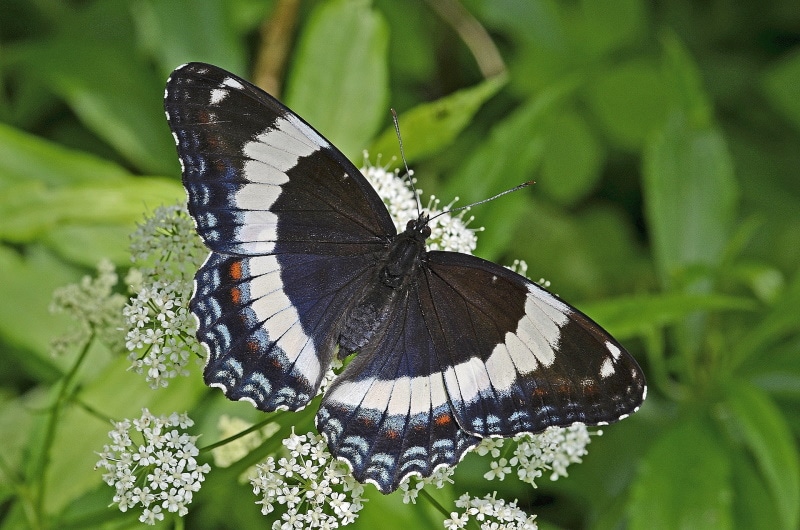
| Scientific Name: | Limenitis arthemis arthemis |
Another large butterfly with a wingspan of up to 4 inches is the White Admiral. This species is all black with a large white band. The caterpillars are a mottled brown color with cream and yellow patches with twig-like horns.
9. Mourning Cloak Butterfly
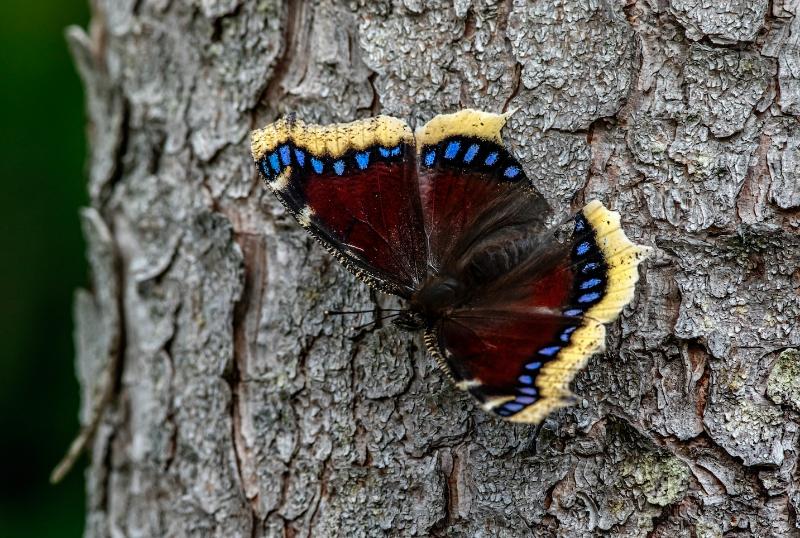
| Scientific Name: | Nymphalis antiopa |
Mourning Cloaks are frequently spotted near deciduous forests, although many people also find them hanging around near yards, golf courses, and parks. They have an iridescent sheet with a yellow border and rows or purple spots. Their camouflage works so well that you probably won’t even see them when they’re right in front of you.
10. Pearl Crescent Butterfly
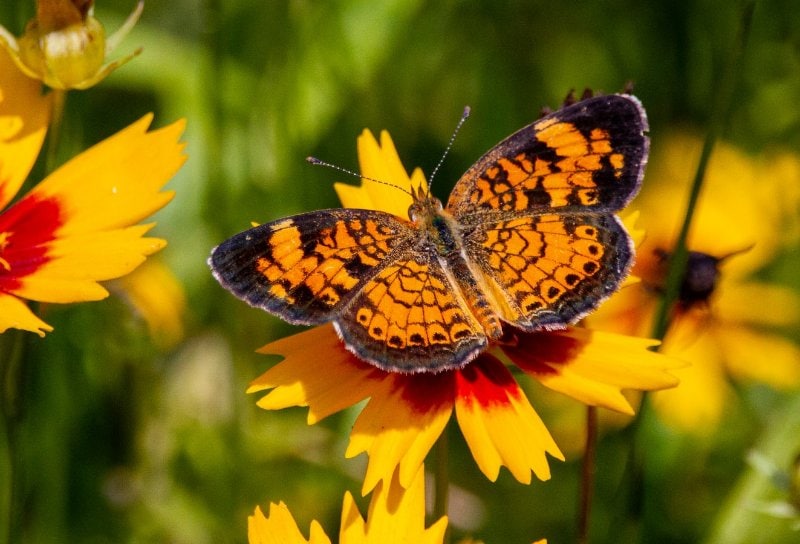
| Scientific Name: | Phyciodes tharos |
The Pearl Crescent caterpillar is a bit scary looking with its spines that cover its body. However, the adults are stunning. These butterflies have orange wings with black or brown borders, lines, and spots. They are most prevalent in southern Michigan, and their preferred host is an Aster plant.
11. Question Mark Butterfly
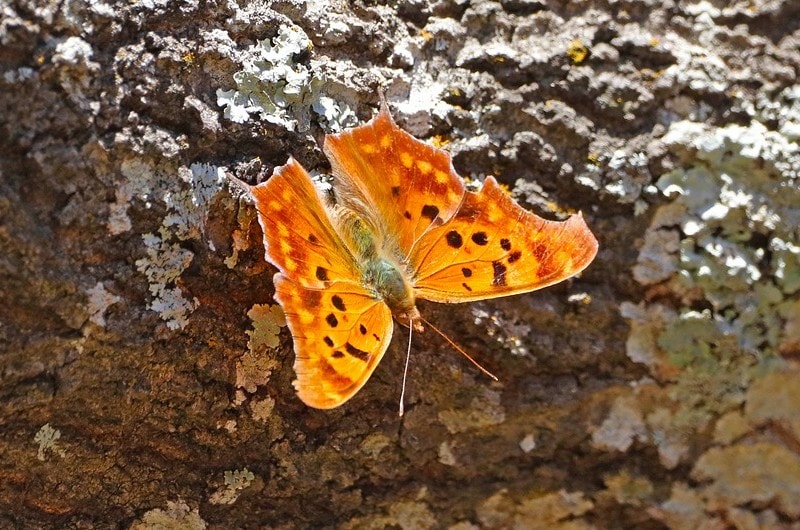
| Scientific Name: | Polygonia interrogationis |
A truly one-of-a-kind butterfly is the Question Mark Butterfly. These beauties have deep orange wings with brown spots and lavender edges. Even the caterpillars are unique with yellow spines that stick off of a black and white body. Look for them in forest edges and moist woodlands.
12. Eastern Comma Butterfly
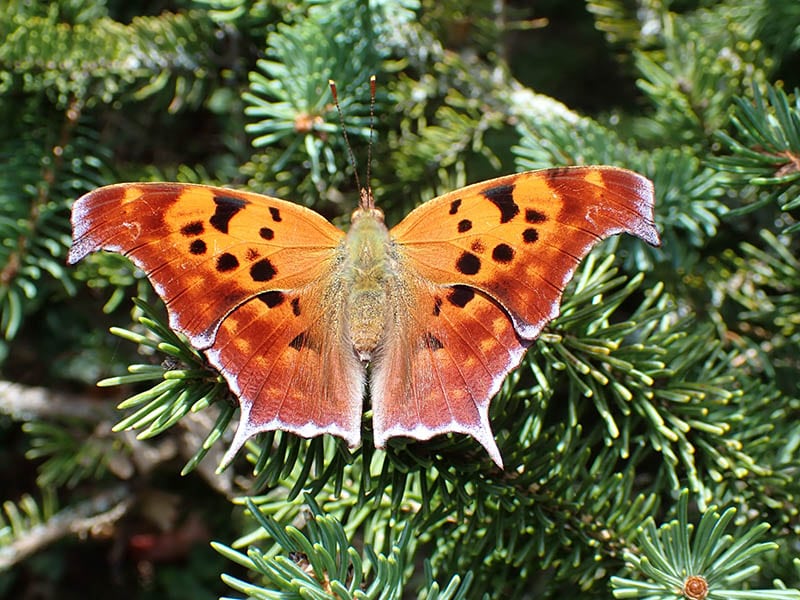
| Scientific Name: | Polygonia comma |
The Eastern Comma looks very similar to the Question Mark. However, they have a smaller wingspan of only 2–2.5 inches and the caterpillars are black or green with white stripes. Find them in deciduous forests, parks, and suburban lawns.
13. Common Buckeye Butterfly

| Scientific Name: | Junonia coenia |
The Common Buckeye is another popular Michigan butterfly. They are mostly brown with orange bars and black and white rings. They also have eyespots that can be magenta, orange, green, or blue in the middle. Common Buckeyes hang out in open spaces, such as fields, pastures, and open land along the side of the road.
14. Variegated Fritillary Butterfly
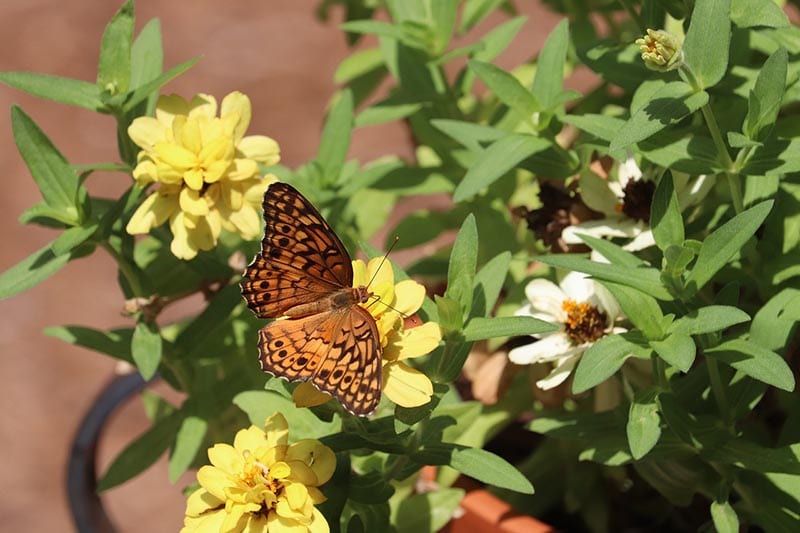
| Scientific Name: | Euptoieta Claudia |
The Variegated Fritillary has a wingspan of 1.75–2.25 inches with brown and burnt orange wings. These butterflies are only present in the southern portion of the state, so you’ll have to travel if you live in the north. However, they are attracted to mint, sunflowers, and butterfly weed, so you can increase your chances by planting these in your garden.
15. Common Wood-Nymph Butterfly
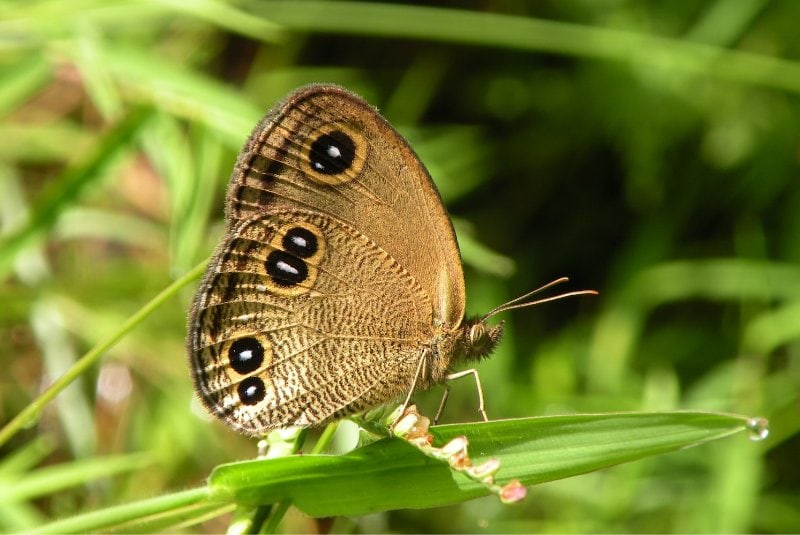
| Scientific Name: | Cercyonis pegala |
We love that this butterfly is almost completely brown in color, although it does have dark eyespots. The Common Wood-Nymph has a wingspan of 2–3 inches, and the caterpillar is yellow-green with green stripes and white hairs. You can find them in many habitats, such as meadows, open forests, fields, and salt marshes.
16. Azure Butterfly
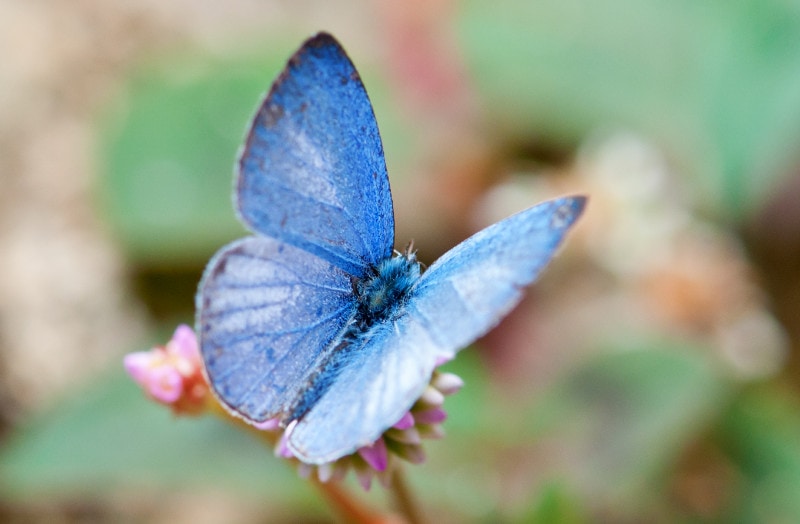
| Scientific Name: | Celastrina ladon |
While Michigan doesn’t have animals that are super colorful like they would be in a tropical climate, the Azure butterfly is a stunning cornflower blue color that is sure to catch your eye. These Michigan butterflies are found in open woodlands, roadsides, forest edges, and hiking trails. They are also one of the most widely seen species in the area.

Final Thoughts
With over 135 species of butterflies, Michigan is a state that you can count on to spot some of these beautiful creatures fluttering from flower to flower. While we didn’t name all of them, we did list some of the most popular that are found here and that you are most likely to see.
Featured Image Credit: Piqsels
Contents